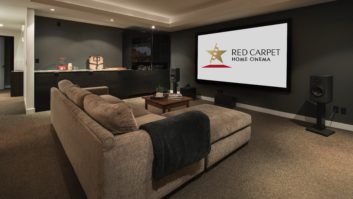At first glance, the term pre-designed packaged systems might not hold much appeal to the average consumer. After all, arent we living at an age when products are supposed to be unique, spontaneous, custom designed and homemade? The truth is, technology of today evolves at a speed that our forefathers could have never imagined, and the exponential growth of new products that this technological explosion has spawned can often create as much confusion as it does benefits.
While there is no doubt that consumers of today expect and demand the latest technological breakthroughs in life-easing products, at the same time these consumers are befuddled by the tangled web of technical details that come with product innovations.
One only needs to go back a few decades to find a clear parallel example of why pre-designed packaged systems is the solution to this problem. In the early days of the consumer audio market, buyers were overloaded with product details and information as new designs and components were constantly making the scene. Consumers worried about which tuner should go with which set of speakers; which turntable with which rocket arm; even down to the particular brand of record needle. To save the day (and consumers sanity), audio specialists pre-packaged different systems based on their technical and cost compatibility, and the result was a big boom in the consumer audio industry.
In many ways, what we are facing today in home theater is not at all dissimilar to what the audio industry went through back in its early days. There has been an explosion of new products lately and while consumers are definitely showing their appreciation for this new technology, they are bewildered by all the choices. So, its up to custom installers, the specialists, to provide clear and intelligent choices to their clients based on their specific needs. The future and continual growth of this market is really dependent on how well we succeed in packaging these choices and, above all, aiming these choices at simplifying the users experience.
Before we get down to the specifics of product design, lets review a few overall trends in the development of the home theater market:
1) Flat-panel technology is not a fad. It is having a revolutionary impact on home theater design as well as on the lifestyle of the American family
2) The home theater market is slowly evolving from a specialist market to a mass market
3) The trend for pricing is down, to near zero.
Clients who engage the service of a custom installer do so for more than sheer convenience. They value the expertise of the installer in helping them select the right brands and the right components for their budget. Market research constantly shows that people dont buy equipment, they buy brands. Finally, consumers rely on the installers ability in servicing the system and repairing it when necessary.
As the expert, helping customers make clear, educated choices will actually pay off for installers. By simplifying choices, the installation process will include fewer problems and become more time efficient. In our business, of course, this means a better bottom line.
When presenting a system to your clients, keep the following points in mind:
1) Your customers prefer consistency of choice and service. They dont necessarily want to know the specific technical capabilities of the system, but rather what the system can do for them. Therefore, emphasize the benefits of a system
2) Listen to your client. You cant give them what they want if you arent clear on the matter
3) Keep it simple. A system should be easy to operate for every member of the family, and that includes the babysitter
4) Treat your customers as informed, intelligent buyers.
This means explaining to them why you combined specific products into their system, why these products are right for them, and why they should buy this package from you.
So far I have focused mostly on home theater. But a package can be a lot more extensive than that. It can incorporate lighting control, data distribution, telephony, security, distributed audio, structured wiring, networking and even a centralized vacuum system. Furthermore, add-ons and upgrade paths, such as more rooms, bigger screen sizes, improved audio and lighting control should also be treated as packages.
Picking out the right components for a package is a group process. Involve your client in this process, of course, but also bring in your installers and even members of your sales staff. Everyone whose input will eventually determine the make up of the exact system should have a role in the decision process.
The future is bright in the quality home entertainment market. Its really up to installers to keep up with all the latest technology and to take full advantage of the opportunities available. Never let the times change faster than you do and stay a step ahead at all times so you can watch your business prosper.
Part 1 and next months Part 2 of this article series have been drawn from Mr. Piccirillis lecture on the same subject, given at CEDIA EXPO 2004.
Joe Piccirilli has been in the consumer electronics and systems integration industry for more than 30 years. Serving as a retailer for 15 years and as a consultant to manufacturers and retailers for 10 years, he is currently the managing director of AVAD, a nationwide value-added distributor of premium home technology.



